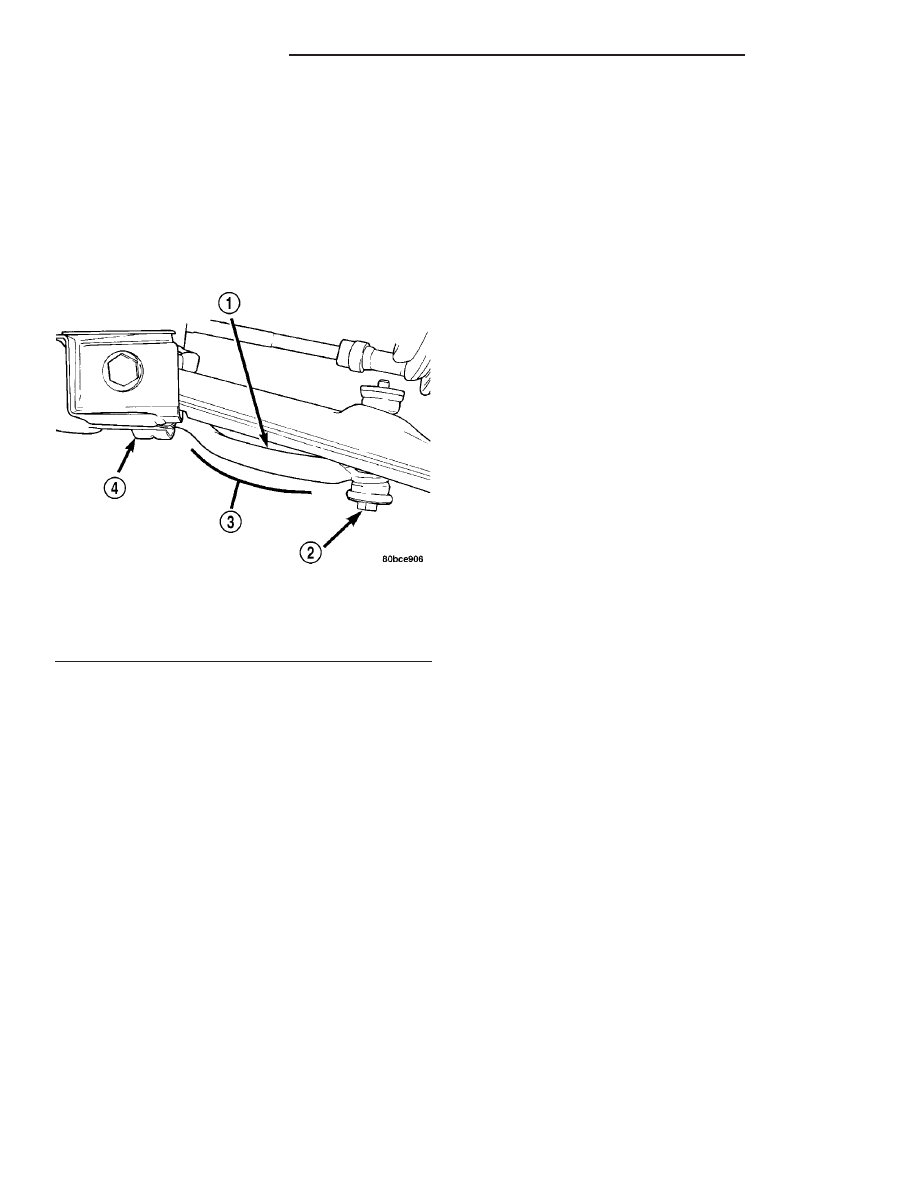Dodge Neon / Neon SRT-4. Manual - part 16

(1) If removed, install the stabilizer bar cushions
on the stabilizer bar utilizing the slit in each cush-
ion. Position the cushions at each end of the bar’s
straight beam, just before it begins to curve.
NOTE: Before installing the stabilizer bar, make
sure the bar is not upside-down. The stabilizer bar
must be installed with the curve on the outboard
ends of the bar facing downward to clear the con-
trol arms once fully installed (Fig. 53).
(2) First, place the stabilizer bar in position on the
front suspension crossmember. The slits in each
cushion must point toward the front of the vehicle
and sit directly on top of the raised beads formed
into the stamping on the crossmember. Next, install
the cushion retainers, matching the raised beads
formed into the cushion retainers to the grooves
formed into the cushions. Install the cushion retainer
bolts, but do not completely tighten them at this
time.
(3) Install both stabilizer bar links back on vehicle
(Fig. 52). Start each stabilizer bar link bolt with
bushing from the bottom, through the stabilizer bar,
inner link bushings, lower control arm, and into the
upper retainer/nut and bushing (Fig. 1). Do not fully
tighten the link assemblies at this time.
(4) Lower the vehicle.
NOTE: It may be necessary to put the vehicle on a
platform hoist or alignment rack to gain access to
the stabilizer bar mounting bolts with the vehicle at
curb height.
(5) Tighten each stabilizer bar link by holding the
upper retainer/nut with a wrench and turning the
link bolt. Tighten each link bolt to a torque of 31
N·m (275 in. lbs.).
(6) Tighten the stabilizer bar cushion retainer
bolts to a torque of 28 N·m (250 in. lbs.).
STRUT ASSEMBLY
DESCRIPTION - STRUT ASSEMBLY (FRONT)
A Macpherson type design strut assembly is used
in place of the front suspension upper control arm
and upper ball joint (Fig. 1). The bottom of the strut
mounts directly to the steering knuckle using 2
attaching bolts and nuts going through the strut cle-
vis bracket and steering knuckle. The top of the strut
mounts directly to the strut tower of the vehicle
using the three threaded studs on the strut assem-
blies upper mount. During steering maneuvers, the
strut assembly (through a pivot bearing in the upper
strut mount) and steering knuckle (through the lower
ball joint) turn as an assembly.
The strut assembly includes the following compo-
nents:
• Strut shaft retaining nut
• Upper mount (rubber isolated)
• Upper spring seat and bearing
• Dust shield
• Jounce bumper
• Coil spring
• Lower spring isolator
• Strut (damper)
Each component is serviced by removing the strut
assembly from the vehicle and disassembling it.
The strut and front suspension of the vehicle is
supported by coil springs positioned around the
upper half of each strut. The springs are contained
between the upper and the lower seats of the strut
assembly.
Coil springs are rated separately for each corner or
side of the vehicle depending on optional equipment
and type of vehicle service. During service procedures
of the strut assembly, if both springs are removed,
mark the springs to ensure installation in its original
position.
NOTE: If a coil spring requires replacement, be sure
that it is replaced with a spring meeting the correct
load rating for the vehicle and its specific options.
OPERATION - STRUT ASSEMBLY (FRONT)
The strut assembly cushions the ride of the vehicle,
controlling vibration, jounce and rebound of the sus-
pension.
The coil spring controls ride quality and maintains
proper ride height.
Fig. 53 Downward Curve
1 - STABILIZER BAR
2 - LINK
3 - DOWNWARD CURVE
4 - CUSHION RETAINER
2 - 26
FRONT SUSPENSION
PL/SRT-4
STABILIZER BAR (Continued)